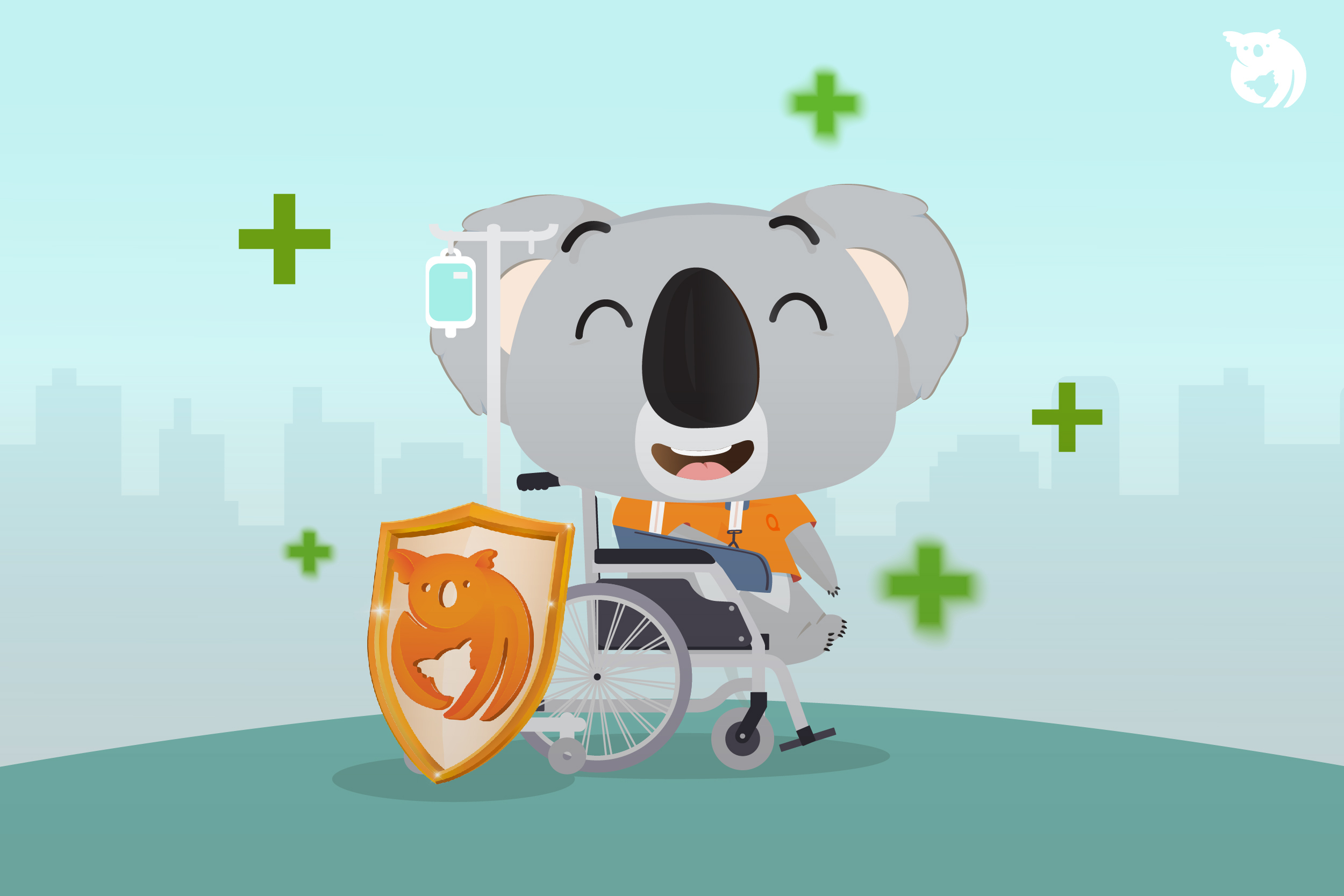The perception of critical illnesses solely affecting older generations has shifted dramatically. Today, it’s becoming evident that younger demographics are also susceptible to these life-altering conditions. Hence, the importance of critical illness insurance becomes increasingly apparent.
What Is Critical Illness Insurance?
Critical illness insurance is a specialized form of coverage designed to provide financial protection when an individual is diagnosed with a severe and life-threatening medical condition. Critical illness insurance provides financial protection through a lump-sum payout to either the policyholder or their family when diagnosed with a major health issue. This benefit comes in exchange for the regular payment of premiums.

You can use the funds as you see fit, such as for medical treatments and to compensate for lost income when you need time off work. This flexibility is particularly important because certain critical illnesses can profoundly alter your life, potentially leading to job loss and restrictions in your daily activities and routines.
What are The Types of Insurance Policies for Critical Illnesses?
There are two types of insurance policies specifically designed to cover chronic health condition – term policy and investment-linked policy.
Term Policy
This type of policy provides coverage for critical illness and associated expenses through a one-off payment (one-time payment). The payout amount is determined by the monthly contributions outlined in the policy. Beneficiaries are eligible for compensation upon diagnosis or in the event of death due to a terminal illness.
Investment-linked Policy
These policies serve as riders to the main insurance policy, offering additional benefits. A portion of the monthly premium is allocated for investment, allowing policyholders to accumulate cash value over time.
In case of a severe illness diagnosis, policyholders will receive a lump-sum payment, while the main policy remains active to cover other illnesses.
Why Do You Need A Critical Illness Insurance Plan?
According to the Department of Statistics Malaysia, heart attack, cancer, and stroke rank as the top three most common serious medical conditions in the general population. These conditions account for 85 percent of all critical illness claims.
Such illnesses can strike at any point in life, and predicting the future is impossible. However, you can prepare yourself and your loved ones by securing the most comprehensive critical illness insurance plan available. Experts often recommend a rule of thumb: you should have coverage equivalent to 60 months of your monthly salary.
This ensures that you can account for all expenses in the event of a terminal illness. This estimation aligns with the typical duration of recovery for an average person facing such a condition. Here’s an illustrative example:
Mr. Ali, a 40-year-old engineer earning a monthly salary of RM6,500, is married to a housewife and has three children. He has recently been diagnosed with lymphoma cancer and is undergoing specific treatments that require him to take unpaid leave.
As the sole breadwinner in his family, he faces not only the recurring treatment costs but also household expenses. Thus, the calculation is as follows:
RM6,500 x 60 months = RM390,000
Mr. Ali requires approximately RM390,000 to cover both the ongoing treatment expenses and the household costs. . Additionally, his critical illness diagnosis entails significant expenses. These include medical equipment, home nursing care (such as wheelchairs and diapers), hospital beds, and sometimes alternative treatments.
In such challenging times, a critical illness insurance plan offers peace of mind. It lets you concentrate on your recovery, free from the worry of financial burden related to treatments and supporting your loved ones.

Which Diseases are Classified as Critical Illnesses?
Some insurance companies provide coverage for up to 36 terminal illnesses under basic plans, while more comprehensive critical illness plans extend coverage to as many as 190 terminal illnesses. Here is a list of illnesses considered critical as defined by insurance policies:
- Heart disease;
- Serious coronary artery disease;
- Coronary artery bypass surgery;
- Primary pulmonary arterial hypertension;
- Heart valve surgery;
- Stroke;
- Cancer;
- Benign brain tumor;
- Major head trauma;
- Kidney failure;
- Medullary cystic disease;
- End stage liver failure;
- End-stage lung disease;
- Blindness;
- Brain surgery;
- Alzheimer’s disease;
- Cardiomyopathy;
- Motor neuron disease;
- Deafness;
- Coma;
- Paralysis of limbs;
- Muscular dystrophy;
- Fulminant viral hepatitis;
- Multiple sclerosis;
- Encephalitis;
- Full-blown AIDS/HIV;
- Parkinson’s disease;
- Chronic aplastic anaemia;
- Bacterial meningitis;
- HIV infection due to blood transfusion;
- Loss of independence existence;
- Loss of speech;
- Major organ/bone marrow transplant;
- Poliomyelitis;
- Pancreatitis;
- Apallic syndrome;
- Terminal illness;
- Progressive scleroderma;
- Eisenmenger’s syndrome;
- Infective endocarditis;
- Myasthenia gravis;
- Progressive supranuclear palsy;
- Systemic lupus erythematosus with severe kidney complications;
- Third-degree burns;
- Adrenal gland disorder;
- Osteogenesis Imperfecta;
- Meningeal Tuberculosis;
- Inflammatory bowel disease
Unlike traditional health insurance, which typically covers medical expenses like doctor visits, hospital stays, and medications, critical illness insurance is unique in its focus on specific, high-impact illnesses.
What Are The Differences between Critical Illness Insurance and A Medical Card?
It’s crucial to understand the distinctions between critical illness insurance and a medical card insurance. These two forms of protection serve distinct purposes in safeguarding your well-being. A Medical Card primarily focuses on providing financial support for medical treatments and hospitalization expenses.
On the other hand, critical illness insurance comes into play when you face a severe health setback. There are some comparisons between both medical card and critical illness policy, as follows:
| Features/ Insurance Plan | Critical Illnesses Plan | Medical Card |
| Coverage |
|
|
| Mode of compensation |
|
|
| Monthly contribution |
|
|
| Limitation |
|
|
| Financial support |
|
|
To delve deeper into the distinctions between critical illness insurance and a Medical Card, you can check this article – Critical Illness Insurance vs Medical Insurance.

Critical Illness Insurance Malaysia: Helps You Survive in Times of Need
Life-threatening conditions can affect anyone, regardless of age or background. Heart attacks, cancer, and strokes do not discriminate. When someone is diagnosed with a major health issue, the emotional and financial toll can be overwhelming.
These illnesses often require extensive medical treatments, specialized care, and may lead to a loss of income due to the inability to work. However, by proactively investing in a comprehensive critical illness insurance plan, you can focus on your recovery journey rather than worrying about the associated financial strain.
Thus, taking steps to protect your financial future is not just a matter of prudence but a necessity. So, consider your options. Consult with experts at Qoala, insurance comparison and renewal platform today, and make an informed decision to safeguard your future.
Remember, it’s not just about insurance; it’s about securing your peace of mind and your family’s well-being.

 EN
EN
 MY
MY








